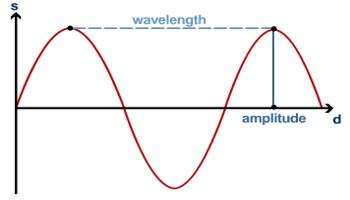A progressive wave is defined as the onward transmission of the vibratory motion of a body in an elastic medium from one particle to the successive particle. In simple terms, a wave that continuously travels in a medium in the same direction minus the changes is known as a traveling wave or progressive wave. A progressive wave is a term given to a wave that travels from a specific point A in the medium to another point B.

Progressive waves dispense energy from a point source into a contiguous area. The disturbance produced in the medium travels onward, it is handed over from one particle to the next. They move energy in the form of vibrating particles or fields. Each particle executes the same type of vibration as the preceding one, though not at the same time.
There are two types of waves: transverse and longitudinal.
- Transverse waves are waves where the displacement of the particles in the medium is perpendicular to the direction the wave is traveling in. These are waves in which the particle displacement in the medium is measured perpendicular to the wave direction or direction of wave travel.
- Longitudinal waves are waves where the displacement of the particles in the same direction as the wave is traveling in. With Longitudinal Waves, the particle displacement remains in the same direction to the wave travel.
Characteristics of a progressive wave
- Each particle of the medium executes vibration about its mean position.
- The particles of the medium vibrate with the same amplitude about their mean positions.
- The phase of every particle changes from 0 to 2π.
- Transverse progressive waves are characterized by crests and troughs.
- All the particles have the same maximum velocity when they pass through the mean position.
- The displacement, velocity, and acceleration of the particle separated by mλ are the same, where m is an integer.












